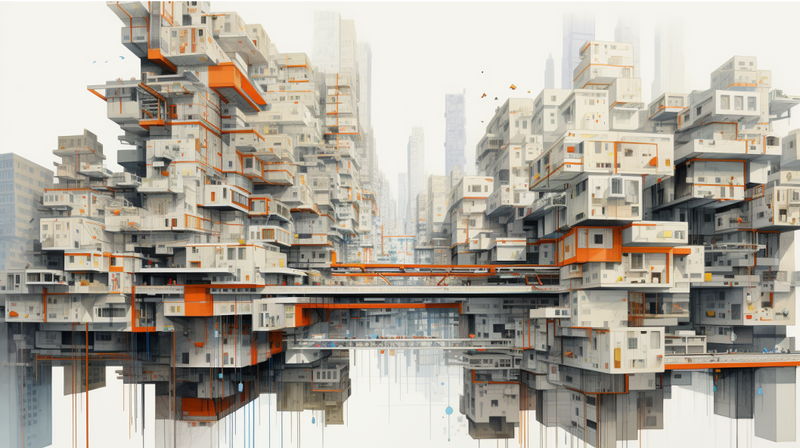Reshaping Cities: How Complex Shapes Create Sustainable Skylines
As dawn breaks over our city skylines, we can't help but admire how architectural art has evolved over generations. But hidden beneath the appealing looks of these sophisticated buildings lies a fascinating world of geometry deeply connected to the ideas of sustainable development. Smoothly adding complex geometry into sustainable urban landscapes isn't just a design trend; it's a detailed solution that's shaping the future of our urban environments.
Complex Geometry: The Art of Modern Buildings
The increasing use of complex geometric shapes and patterns in modern architecture has created buildings that are not only visually striking but also incredibly clever in their construction. By bending, folding, and curving materials into non-traditional shapes, architects can control structural forces, make the most of material use, and improve how well buildings perform. Advanced math like non-Euclidean geometry and fractal mathematics are used to create patterns and forms that challenge traditional building rules, shaping structures that are both cutting-edge and highly practical.
From the wavy outer wall of the Elbphilharmonie in Hamburg to the twisted elegance of the Turning Torso in Malmö, architects are using complex geometry to make structures more stable, control light, and manage sound. This creates a perfect blend of beauty and practicality.
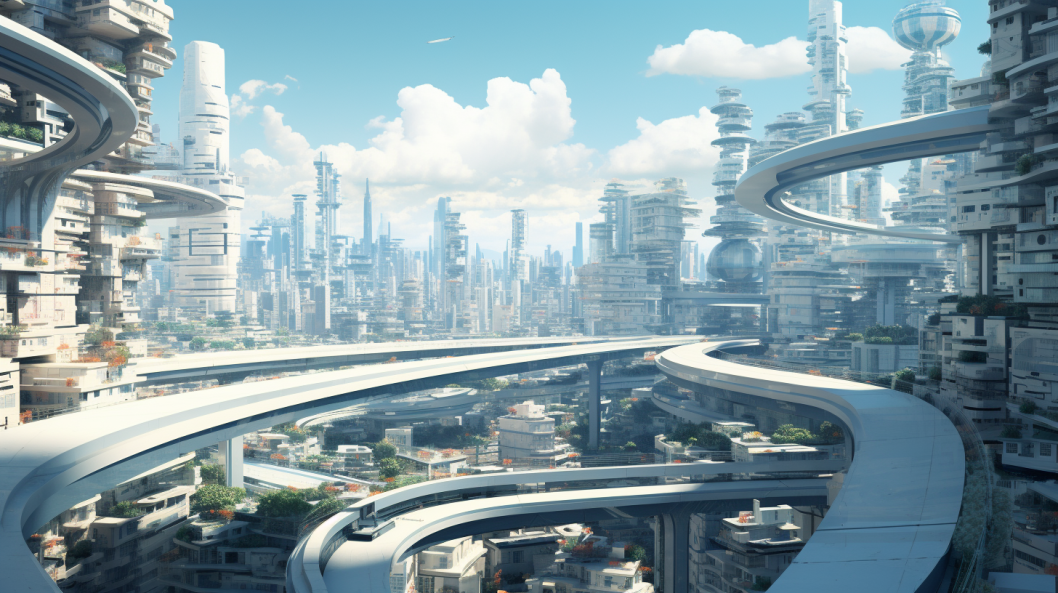
The Link Between Complex Shapes and Sustainability
Embracing complex geometry in urban landscapes goes beyond just how things look; it firmly plants itself within the idea of sustainability. Through innovative design and engineering, these geometrically complex buildings make the most of natural light, promote ventilation, and manage heat. This reduces their reliance on artificial lighting, cooling, and heating systems. Therefore, they play a crucial role in lowering the carbon footprint of city clusters.
For instance, a wavy or folded outer wall can deflect wind and capture its power, while a strategically twisted structure might optimize how much solar energy it gains. These geometric considerations, while seemingly complex, have a profound impact, creating city skylines that are both visually and environmentally harmonious.
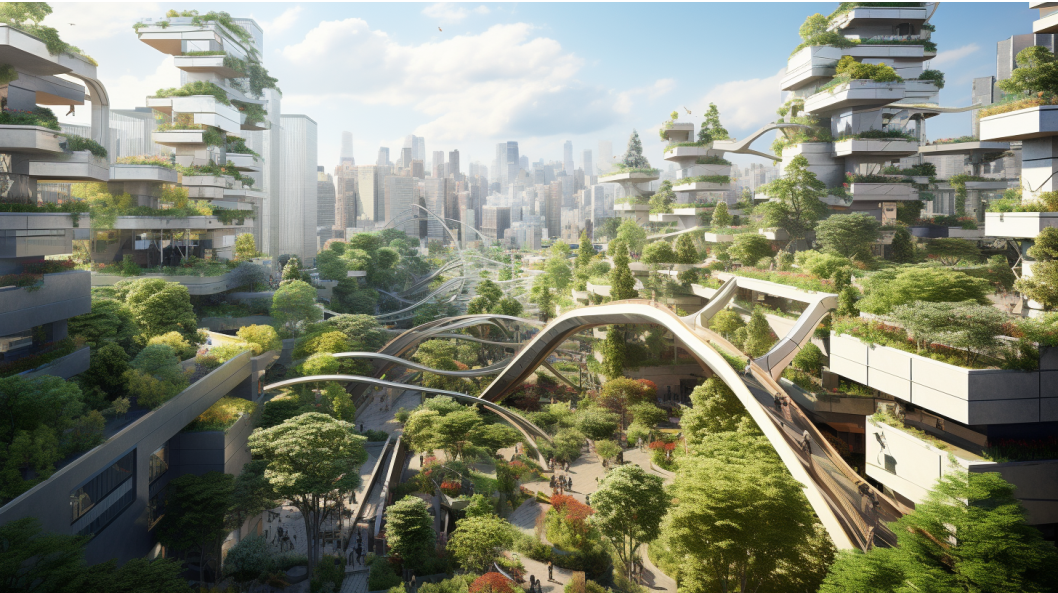
Adapting Cities: The Role of Nature-Inspired Design
Biophilic design, which aims to reconnect people with nature within the built environment, often uses complex geometric structures that mimic patterns found in the natural world. This method naturally promotes sustainability by integrating natural elements like light, water, and plants into architectural designs, ensuring energy efficiency and improving the well-being of the people who live there.
The idea of a "living building" covered in green walls, or a skyscraper that copies the lightness and strength of a bird’s skeleton, are brought to life by understanding and applying intricate geometric shapes. These designs not only make the urban view more beautiful but also add to biodiversity, improve air quality, and regulate urban heat, weaving a network of sustainability throughout the city.
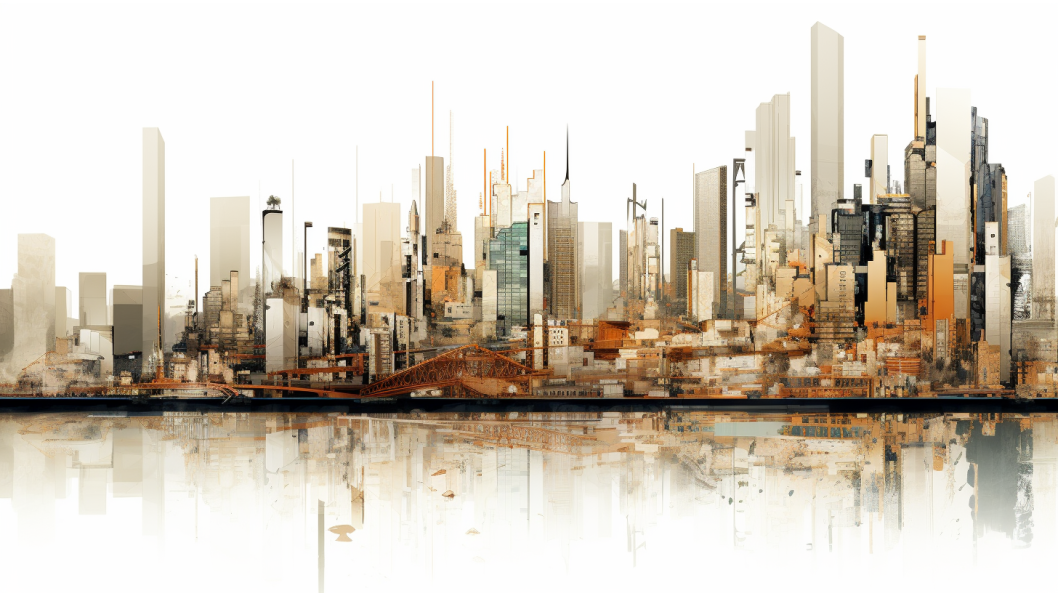
Future Skylines: A Mix of Beauty and Responsibility
Transforming skylines isn't just about building taller, bolder, and more unusual structures; it's about creating a perfect blend of technical innovation and environmental care. This requires strong teamwork among architects, engineers, environmental scientists, and policymakers to orchestrate a skyline that is both a visual masterpiece and a symbol of sustainable living.
As we look towards our evolving skylines, the role of complex geometry becomes clearly linked with our pursuit of a sustainable future. Our urban landscapes, adorned with geometric marvels, not only stand as proof of human cleverness but also embody our commitment to fostering a future where development and sustainability walk hand in hand.
The marriage between complex geometry and sustainable urban landscapes shines a light on the path towards our future cities—cities that mesmerize, inspire, and nurture in equal measure. Transforming skylines will continue to stand tall against our urban horizons, telling stories of an era where architecture became the canvas upon which humanity painted its most genuine commitment to a sustainable future.
By creating cities that reflect the carefulness of geometric complexity and the virtue of sustainability, we pave the way for a time where every skyline is a monument to human innovation, artistic expression, and ecological responsibility. And so, the transformation isn't just of our skylines, but of our values, aspirations, and ultimately, our legacy to future generations.
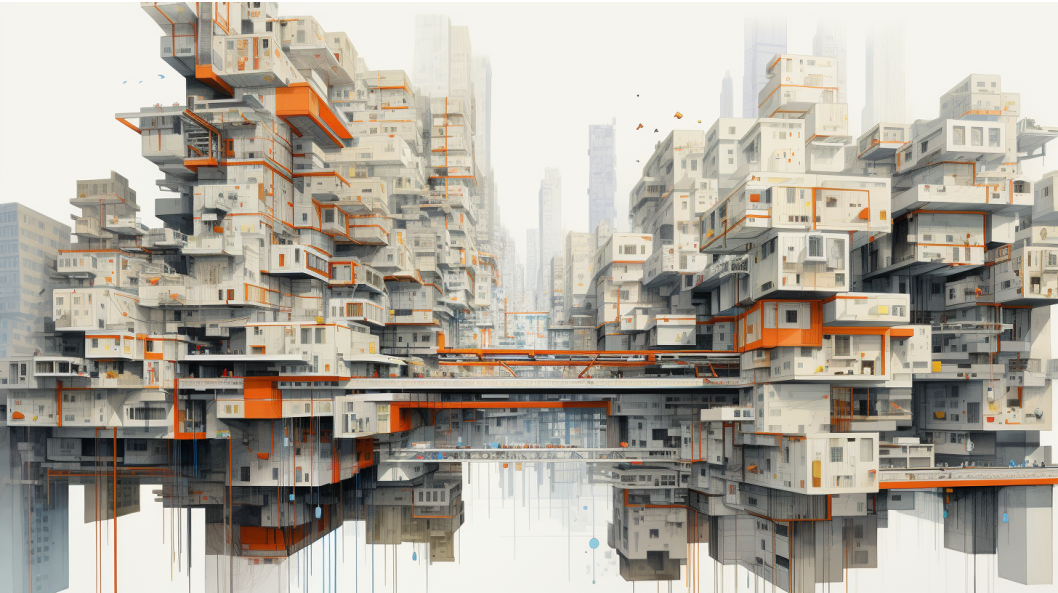
Welcome to planksip® – your go-to media outlet for top-notch content creation. Get content like this for just $200 per week!
